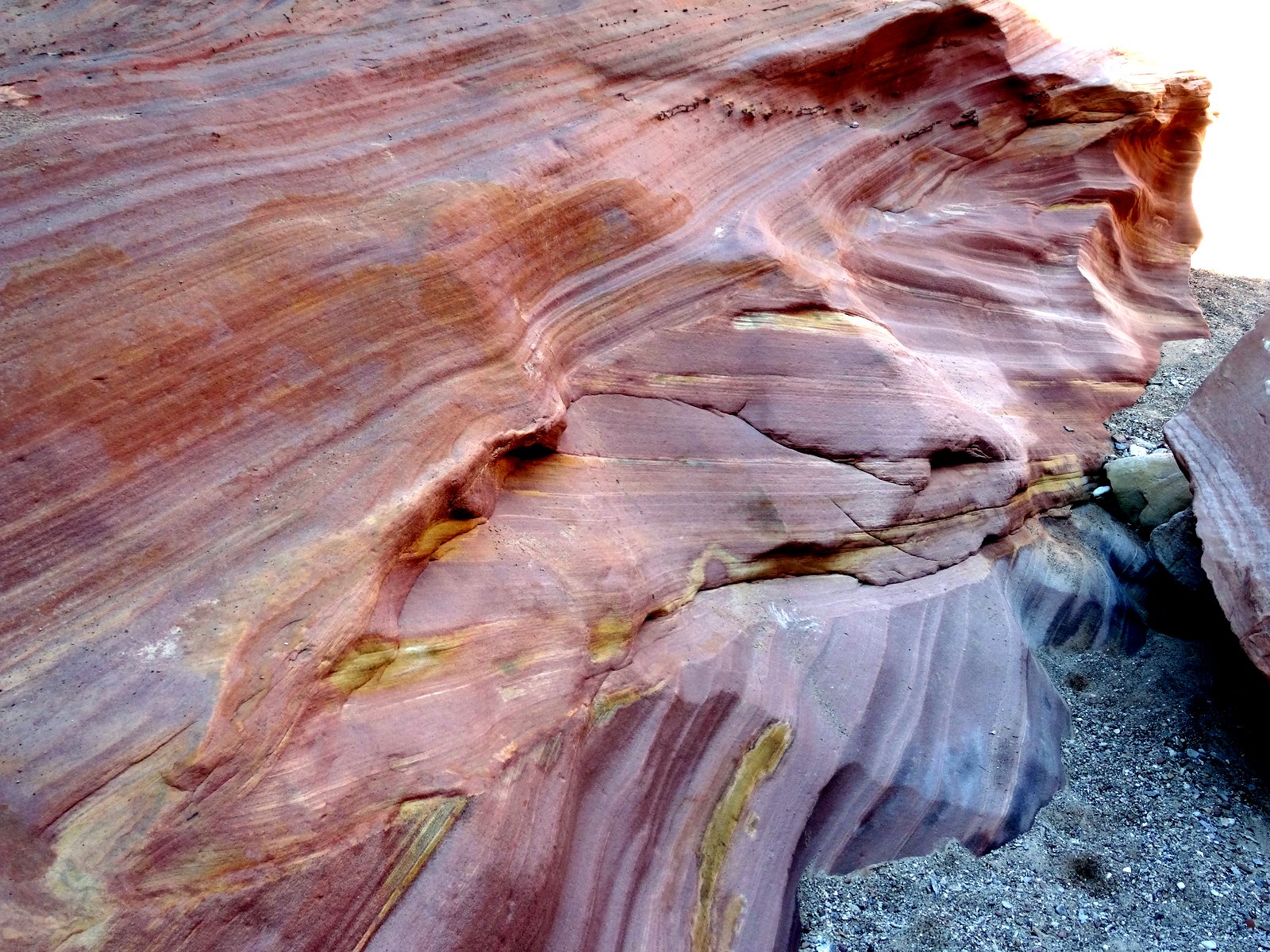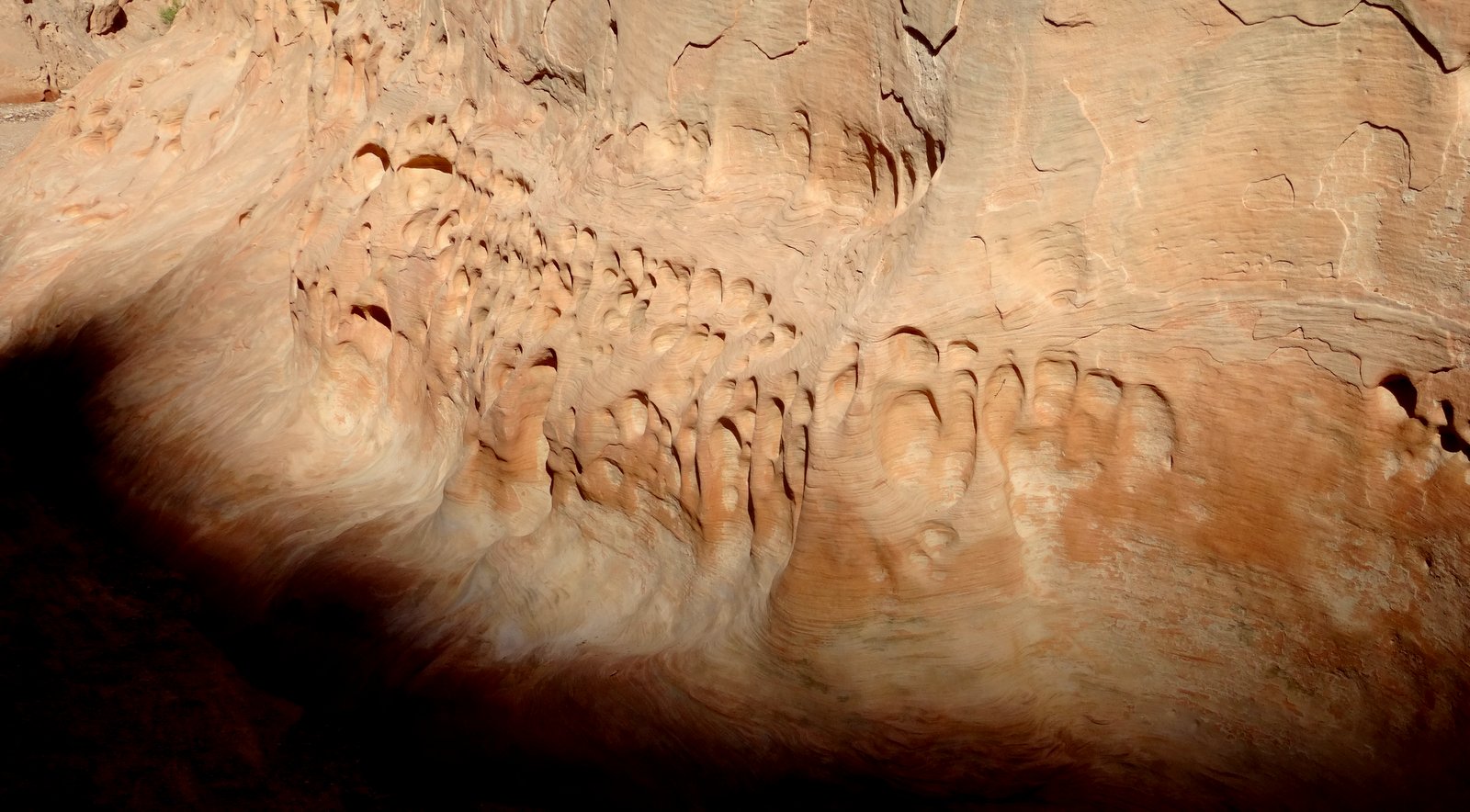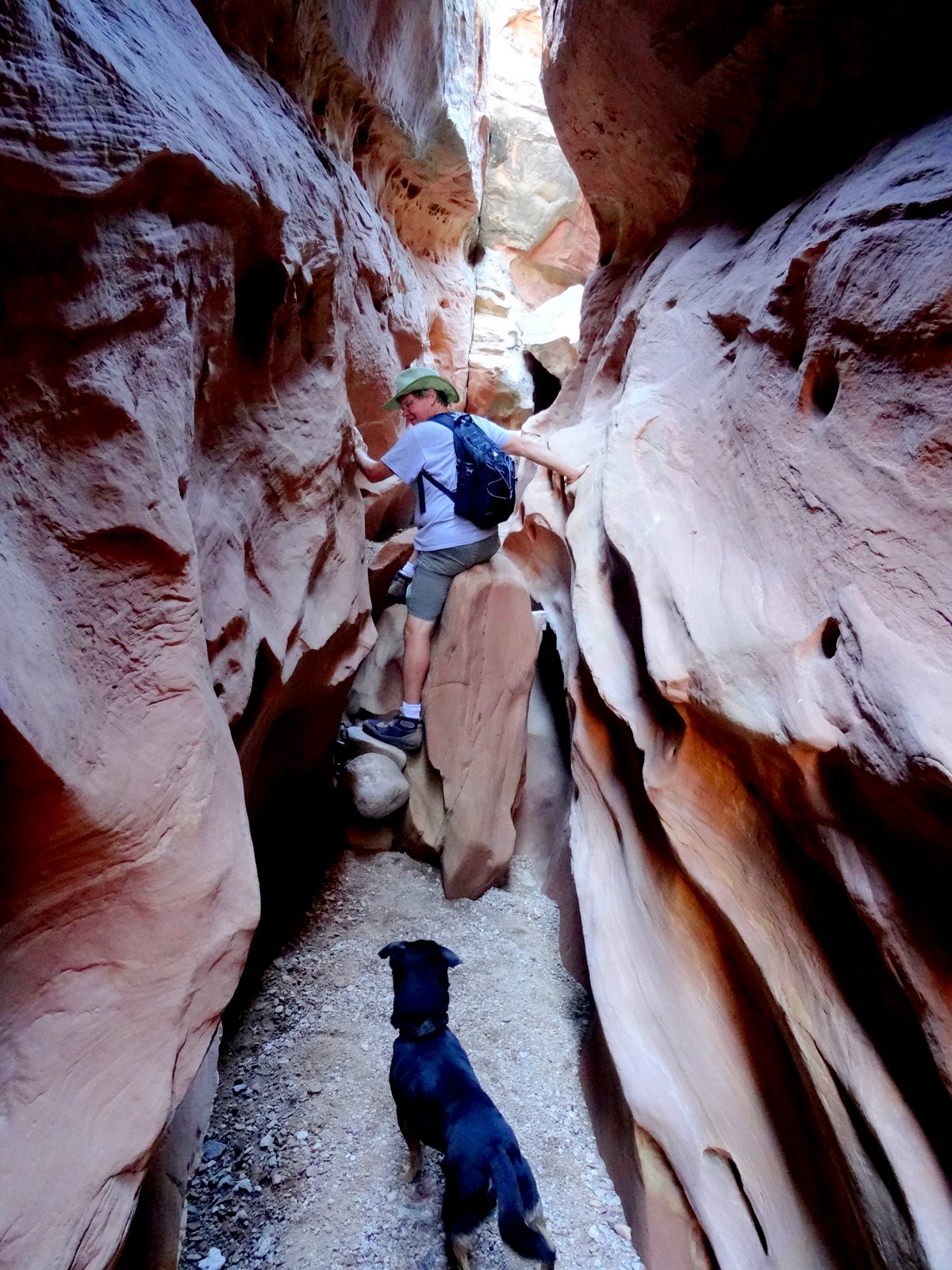I hoped Little Wild Horse Canyon had enough time to dry out a little, but ready or not, it was time to hike. This time we arrived at the trailhead early and there was no problem with parking.
The trail started off looking like just any of thousands of canyons in the area. We walked along a gravel wash below colorful rock bluffs. There was one large puddle not far from the parking lot but we were able to climb over some rocks to get around it.
The boulder on the ground had obviously fallen away, leaving a great example of "ripple rock", a rock layer formed when this was a shallow seabed.
Less than a mile from the car, the canyon significantly narrowed.
The canyon finally became a narrow slot. My shoulders could touch rock on each side. I could not easily turn around with the backpack on.
There were only two or three places where we had to climb over some rocks, nothing too big. The slot opened up into a wide area for a few hundred yards and then became a slot, once again.
We continued until we could no longer see a way forward without getting our feet wet. The folks below were determined to straddle the water around the next few bends to see if they could get beyond it. I could have called out to them to see what conditions they found, but I estimated we were between 1.75 and 2 miles from the car, so that was enough for the day. I don't know what lay beyond, but I think we probably saw the best of the Little Wild Horse Canyon.
On our way out of the canyon, this shady spot at the entrance to the second slot made a good place to stop for some lunch.
We could not decide if we were more saddened or inspired by a group of blind hikers (two of their group were sighted). I am sure the hike was enjoyable and maybe even unique for them, but I could not imagine missing out on all of the visual beauty we experienced. Seeing them made us thankful for the blessings we have and usually simply take for granted.
Our plan for the evening was just to set up our scopes and enjoy the dark skies. It was perfectly clear (no clouds), but there was a little more moisture in the atmosphere than last night. Stars near the horizon seemed to twinkle a bit more and the starlight seemed to lighten the sky a little.
John set up his Televue 127 refractor and allowed me to point it wherever I wanted. The wide field views were incredible with pinpoint stars from edge to edge across the field. I was able to view a lot of Messier objects - absolutely beautiful. I know these APO refractors are also fantastic for astrophotography. I hope to have the opportunity to try that someday!
John mentioned all of his equipment was paid for with royalties from his books.
John tried to split some more challenging doubles in my telescope, but my mounts poor pointing accuracy made it difficult to find the really close targets.
Jim and Nathan (the park rangers) brought out their 9.25 inch Celestron and set it up to practice for their interpretive program. They were able to try my 2-inch diagonal visual back and many of John's excellent eyepieces. They were sold on the improvement over the stock 1.25 visual back and 12mm Plossl eyepiece that came with their telescope.
John went over a lot of information with them for tomorrow's program while I entertained about a half dozen campers who wanted to look at anything I was willing to show them. They were really impressed with the go-to capabilities of the computerized mounts and thought they would look into getting something similar.
All-in-all a great night under the stars!
Footnote: A few days later when I had internet access, I looked at John Mosley's website www.StargazingAdventures.org and found out that during his 35-year professional career he worked in two public planetariums: the historic Hansen Planetarium in Salt Lake City Los Angeles Griffith




























No comments:
Post a Comment